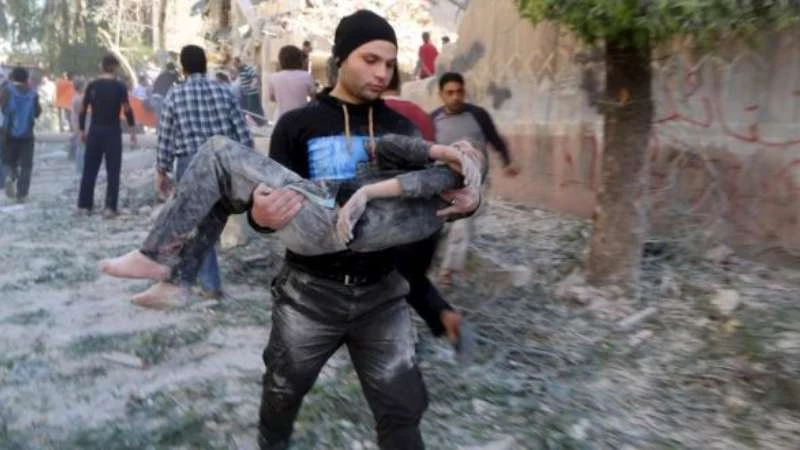I’m a pediatrician in Chicago. But this summer, I traveled with two colleagues from the Syrian American Medical Society (SAMS) to Aleppo. There, I saw first-hand the way this war is maiming children emotionally as well as physically. The kids I encountered often struggled with debilitating trauma. Some had stopped eating; others were barely able to communicate.
My experience echoes across the country. In one town, CNN reported a rash of child suicide attempts. “The children are psychologically crushed and tired. When we do activities like singing with them, they don’t react at all, they don’t laugh like they would normally,” a teacher in the western town of Madaya told Save the Children. “They draw images of children being butchered in the war, or tanks, or the siege and lack of food.” In a report, the Office of the U.N. High Commissioner for Refugees has said that “the most prevalent and most significant clinical problems among Syrians are emotional disorders, such as: depression, prolonged grief disorder, post-traumatic stress disorder and various forms of anxiety disorders.” According to Save the Children, “the repercussions for the future mental health of an entire generation could be catastrophic.”
I spent some of my time in Syria at the SAMS-supported underground hospital M10. It is the main trauma facility in east Aleppo. When we arrived, the orthopedic surgeon changed into his scrubs and went to work in the emergency room. I headed to the intensive-care unit, where two children were being treated for head and chest wounds. They had been struck by a barrel bomb while playing outdoors. One of the boys, about 10, died three days later.
Later, I moved to a different hospital, M2, where there was a pediatric ward and clinic. Each day children would be brought by their families or ambulance. They suffered from the physical injuries you would expect in a war zone: head injuries, limb amputations and a myriad of cuts and bruises.
Many were also suffering from the trauma of living in a war zone. I remember one patient, an 8-year-old named Zaira, brought in by her parents because she had stopped eating. Zaira would get hysterical if her parents left the room. In addition, she had begun to wet her bed on a nightly basis. When I talked to the child with a female interpreter, she would not make eye contact with me. Instead, she looked blankly into the distance, what psychologists call “the thousand-yard stare.”
I also saw another family with three children, ages 3, 5 and 7. Their original apartment had been destroyed by a barrel bomb; they now lived with cousins. The two older children were too afraid to sleep indoors at night, so their father set up a makeshift tent in the alley. He slept there each night with them. They could not be convinced that sleeping indoors was safer.
In many ways, this isn’t surprising. Children need safety, predictability and security to thrive. Syria’s war has made that impossible, especially in places like east Aleppo, where 300,000 people have been under siege, 40 percent of them children. In this city, traditional bombs have been used alongside chemical weapons like chlorine gas. The beleaguered citizens of Aleppo have been denied even the most basic humanitarian relief. Scores of children and even more adults have been killed and gassed.
This environment has led to epidemics of anxiety and depression among Syria’s children. These mental-health challenges can have long-term consequences on the child’s ability to learn and to form meaningful relationships. Once this war is over, we’ll need to conduct a major mental-health assessment and treatment for these children. Physical safety and rebuilding will be the easy part. Healing the spirit and soul is much harder.
John Kahler in Journal Now



التعليقات (0)